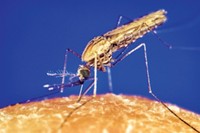Advertisement
Grab your lab coat. Let's get started
Welcome!
Welcome!
Create an account below to get 6 C&EN articles per month, receive newsletters and more - all free.
It seems this is your first time logging in online. Please enter the following information to continue.
As an ACS member you automatically get access to this site. All we need is few more details to create your reading experience.
Not you? Sign in with a different account.
Not you? Sign in with a different account.
ERROR 1
ERROR 1
ERROR 2
ERROR 2
ERROR 2
ERROR 2
ERROR 2
Password and Confirm password must match.
If you have an ACS member number, please enter it here so we can link this account to your membership. (optional)
ERROR 2
ACS values your privacy. By submitting your information, you are gaining access to C&EN and subscribing to our weekly newsletter. We use the information you provide to make your reading experience better, and we will never sell your data to third party members.
Biological Chemistry
Ground-cherries boost caterpillar’s immune system despite being toxic to other insects
The fruit containing withanolides is being examined by researchers for anticancer and anti-inflammatory properties.
by Sarah Everts
September 5, 2016
| A version of this story appeared in
Volume 94, Issue 35
Scientists have long been interested in the medicinal properties of ground-cherries, a curious orange fruit wrapped in a lantern husk. That’s because the fruit contains withanolides, a class of steroidal lactones that possess anticancer and anti-inflammatory properties. The plant, a member of the nightshade family that includes the tomatillo, produces withanolides as a defense against herbivores. The chemicals can, for example, disrupt insect molting. But these fruits are not toxic to Heliothis subflexa larva, a moth caterpillar that feeds exclusively on the ground-cherry species Physalis peruviana. Researchers led by Hanna M. Heidel-Fischer of the Max Planck Institute for Chemical Ecology wondered why. The team discovered that, besides helping the caterpillar gain weight, withanolides stimulate the caterpillar’s immune system by activating the expression of genes that help it fight bacterial pathogens (Nat. Commun. 2016, DOI: 10.1038/ncomms12530). This is opposite to the effect these compounds have on all other insects studied to date, the researchers note. “Beyond simply countering the plant-produced antiherbivore compounds or using them for its own defenses (for example, by sequestration), the insect has succeeded in converting the inhibitory effects of withanolides into activation effects for its own advantage,” they write.





Join the conversation
Contact the reporter
Submit a Letter to the Editor for publication
Engage with us on Twitter